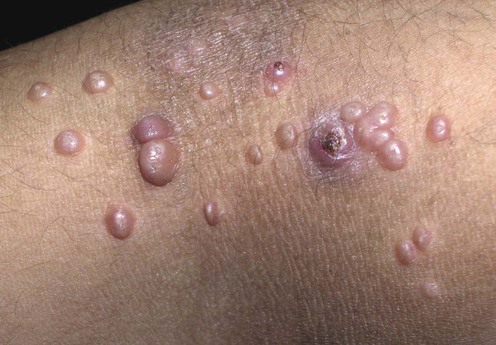Deleixhe-Mauhin F, Piérard-Franchimont C, Piérard GE. J Dermatol Treat 1991; 2: 99–101.
Molluscum contagiosum

Second-line therapies
Podophyllotoxin in the treatment of molluscum contagiosum.
![]()
Stay updated, free articles. Join our Telegram channel

Full access? Get Clinical Tree




 Await spontaneous resolution
Await spontaneous resolution Manual extrusion with gloved fingers or fine forceps
Manual extrusion with gloved fingers or fine forceps Topical 5% acidified nitrite co-applied with 5% salicylic acid
Topical 5% acidified nitrite co-applied with 5% salicylic acid Topical salicylic acid gel 12%
Topical salicylic acid gel 12% Topical 10% povidone-iodine and 50% salicylic acid
Topical 10% povidone-iodine and 50% salicylic acid Topical 40% silver nitrate paste
Topical 40% silver nitrate paste Topical 0.5% podophyllotoxin
Topical 0.5% podophyllotoxin Cryotherapy
Cryotherapy